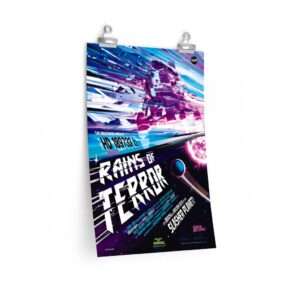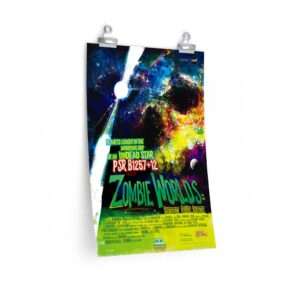Halloween is way more than just a night of costumes and candy; it’s a profound cultural phenomenon, blending two millennia of history into one glorious, $11.6 billion event. For gift givers and decor enthusiasts, understanding the history of October 31st transforms your celebration from simple spookiness to deep, meaningful observance.
Ready to impress your friends with some seriously deep knowledge? We’ve carved out the ten most fascinating facts about All Hallows’ Eve—from ancient Gaelic rituals to modern economic drivers—that explain why this holiday still fulfills a deep human need for connection and escapism.
Here are 10 things you absolutely need to know about Halloween:

1. The Real Jack-o’-Lantern Was a Root Vegetable
That smiling pumpkin on your porch? It’s an American newcomer! The tradition of carving illuminated faces originated in Ireland and Scotland. Instead of pumpkins, early Celtic cultures used turnips, potatoes, or beets. These vegetables were carved into grotesque faces, lit by an ember or candle, and intended to actively ward off evil spirits and unwanted supernatural visitors. The name, “Jack-o’-Lantern,” is derived from an Irish surname associated with the carving tradition.

2. Halloween’s Roots Are Older Than the Celts
The foundation of modern Halloween lies in the ancient Gaelic festival of Samhain. However, the observance date of October 31st/November 1st reflects an even older lineage. Archaeological evidence, such as the Mound of the Hostages on the Hill of Tara in Ireland, shows that this specific seasonal transition held ceremonial importance for Neolithic, Stone Age people 4,500 to 5,000 years ago, long before the Celts arrived.

3. Costumes Were Spiritual Camouflage
When the ancient Celts celebrated Samhain—a time when the veil between the physical and spiritual worlds was believed to be exceptionally thin—they practiced guising or mumming. These disguises weren’t for fun; they were functional camouflage, adopted by the living to confuse wandering evil spirits and ensure they were left alone.

4. The Celebration is a Massive, “Inelastic” Economic Driver
Despite economic uncertainty, consumer spending on Halloween remains consistently high, a phenomenon analysts call “inelastic” consumption. The holiday is rivaled only by Thanksgiving and Christmas in consumer spending. Total projected spending in the U.S. for 2024 is set to reach $11.6 billion, with an average expenditure projected at $103.63 per person. Analysts believe consumers prioritize this expenditure because it provides an essential psychological release valve for communal celebration and escapism from daily stresses.

5. Trick-or-Treating Began as Charity and Appeasement
The modern ritual of going door-to-door has deep roots in the medieval customs of Souling and Mumming. Souling involved poorer community members requesting food or money (often in exchange for prayers for the family’s departed souls). They were rewarded with soul cakes—small, spiced baked goods. Participants in these customs often impersonated spirits, receiving offerings on their behalf, establishing a transactional framework where an offering secured safety from mischief.

6. Orange and Black Symbolize Life and Death
The iconic Halloween color palette is steeped in history and symbolism, visually capturing the profound seasonal change defined by Samhain. Orange symbolizes the warmth of the central bonfires and the success of the autumn harvest—the last burst of vitality before winter. Black represents the “death” of the agricultural year, the cold, long winter, and the darkness of the spirit realm when the veil was lifted.

7. Black Cats Were Linked to Demonic Familiars
The black cat’s spooky association stems not from ancient paganism but from the European witch craze, particularly starting in the 16th century. During this period of religious persecution, black cats fell out of favor and were widely believed to be the familiars, or demonic servants, of witches. This superstition was so powerful that it persists today, impacting real-world animal welfare.

8. Traditional Games Were Used for Divination
Many traditional Halloween games involving seasonal items like apples, hazelnuts, and chestnuts were historically used for divination—the practice of attempting to foretell the future. For instance, bobbing for apples is often linked back to the Roman festival of Pomona, the goddess of fruit and trees. Other customs involved reading the ashes of nuts tossed into a fire to predict romantic prospects.

9. Halloween and Día de los Muertos Have Different Goals
Though they occur close together, Halloween (October 31st) and Día de los Muertos (November 1st and 2nd) are fundamentally different. Halloween, descended from Samhain, traditionally focuses on chaos, macabre themes, and the potential danger of malevolent spirits, necessitating protective measures like masks and carvings. Día de los Muertos is, conversely, a profoundly festive and reflective occasion dedicated to honoring, celebrating, and welcoming the spirits of deceased loved ones back home.

10. Modern Celebrations Face Legal Restrictions
As the holiday transitioned from rural folk custom to regulated suburban event, municipalities have imposed legal restrictions to contain the historical allowance for misbehavior. These laws often include age limits on trick-or-treating (e.g., 12 and under in Chesapeake, Virginia) or public mask bans (e.g., in Dublin, Georgia, for those under 16). These restrictions legally override the mask’s original function as spiritual camouflage to address modern concerns about vandalism or criminal identification.
Ready to Embrace the Darkness and the Light?
The power of Halloween lies in its ability to connect us to ancient rituals while offering modern fun. Whether you’re creating the perfect tablescape celebrating the orange harvest and the black night, or seeking the most unique costume to channel the protective spirit of guising, the items you choose help tell the story of this complex holiday.
Shop our new seasonal collection today to find the perfect decorations and thoughtful gifts that honor the tradition of warmth and ward off the impending winter darkness!
Our Halloween Collection
-
Printed NASA Horror Poster “Flares of Fury”
$9.99 $19.99Price range: $9.99 through $19.99 -
Printed NASA Horror Poster “Rains of Terror”
$9.99 $19.99Price range: $9.99 through $19.99 -
Printed NASA Horror Poster “Zombie Worlds”
$9.99 $19.99Price range: $9.99 through $19.99 -
Staff T-Shirt from Willy’s Wonderland Movie – Cult Film Merc…
$25.00 $35.00Price range: $25.00 through $35.00




